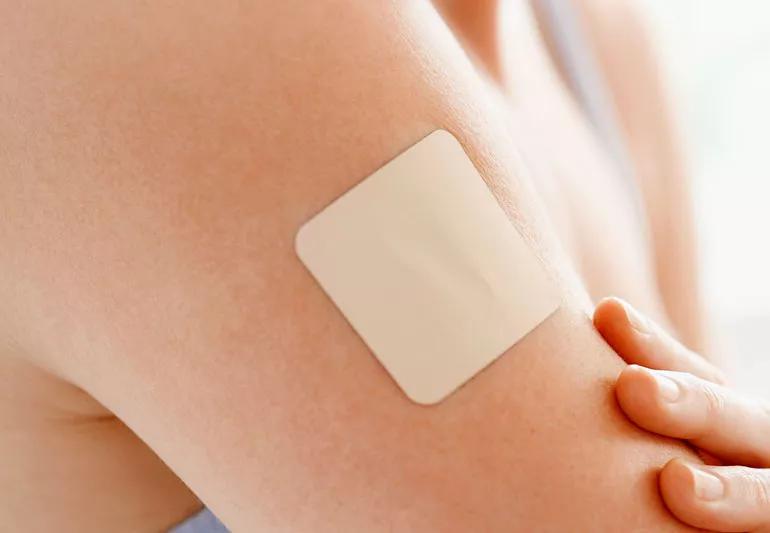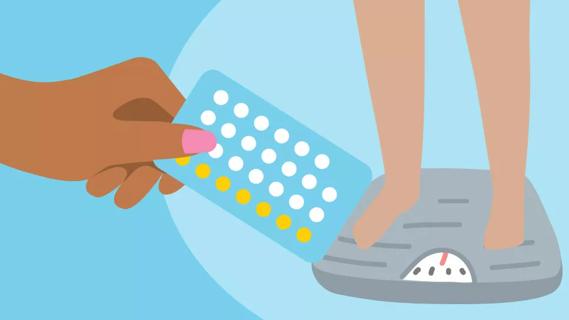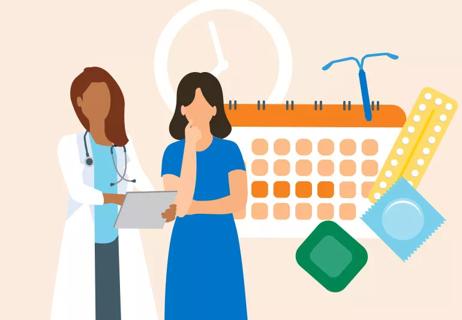Find out if this method of preventing pregnancy is right for you

If you want to avoid getting pregnant, birth control is a must. As far as contraceptives go, the birth control pill is an A-list celebrity. But don’t overlook her less-famous and just as talented cousin: the birth control patch.
Advertisement
Cleveland Clinic is a non-profit academic medical center. Advertising on our site helps support our mission. We do not endorse non-Cleveland Clinic products or services. Policy
“Anyone looking for an effective contraceptive should consider the patch,” says Ob/Gyn Betsy Patterson, MD.
Dr. Patterson explains how the patch works, how to use it and whether it’s the right choice for you.
The birth control patch is a small bandage that you stick on your skin. Once attached, it releases the hormones estrogen and progestin into your system.
“These are the same two hormones found in most birth control pills,” says Dr. Patterson. “With the patch, they’re just delivered through the skin instead of in a pill form.”
Two different brands of the patch are available in the U.S. with a doctor’s prescription. Both contain estrogen and progesterone and work the same way. Stick the patch onto your lower back, arm or abdomen and it releases a steady dose of the hormones.
Your body absorbs the hormones, and they prevent your ovaries from releasing any eggs. The patch also thickens cervical mucus so that if an egg does manage to slip through (unlikely), sperm would have trouble reaching it.
The patch does a great job of preventing pregnancy. When used correctly, it prevents pregnancy in more than 99 of every 100 cases. That’s about as effective as the pill.
Like the pill, though, the patch may not work as well if you’re taking specific antibiotics or certain other medications (such as antiviral drugs). If you’re taking other meds, talk to your doctor about whether they will affect your birth control.
Advertisement
Most forms of hormonal birth control — including the patch, pill and ring — can cause similar side effects, including:
Side effects like sore breasts and spotting are most common during the first few weeks or months that you use the patch, Dr. Patterson says. After that, they typically fade away as your body gets used to the hormones.
The risk of blood clotting is a bigger concern. Overall, the risk is quite low when using the patch, Dr. Patterson says. In fact, the risk of blood clots is much greater during pregnancy than it is in those using the patch to prevent pregnancy.
However, the patch does have a slightly higher risk of clots compared to the pill. For that reason, avoid it if you:
“If you have a higher risk of blood clotting diseases, there are safer alternatives, like low-dose birth control pills,” Dr. Patterson says.
Not all side effects of the birth control patch are negative. In fact, some use the patch mainly for the other benefits that go along with it, like:
The patch is easy to use:
Advertisement
“There’s some wiggle room,” Dr. Patterson says. “If you forgot to put a new patch on, put it on as soon as you remember, within 48 hours.” If it’s been longer than 48 hours, use backup birth control for two weeks to avoid an unwanted pregnancy.
Is the birth control patch a good choice for you? If you’re healthy and don’t have any risk of blood clotting problems, the patch may be a great option, Dr. Patterson says.
She recommends the patch if you:
On the other hand, you might want to skip the patch if you:
There is no one perfect method. Some love the patch. Others prefer the pill or the ring. It might take some trial and error to find the best birth control method for you. But isn’t it great to have options?
Advertisement
Learn more about our editorial process.
Advertisement

Today’s birth control pills don’t usually cause depression — but hormones affect everyone differently

No, you can’t prevent pregnancy by douching after sex, having sex standing up or having sex only at the ‘safe’ time

IUDs can make your period lighter, heavier, irregular or stop it completely

Birth control gel is simple to use and an effective method for preventing pregnancy

The scenarios vary based on how many pills you’ve missed and whether you take a combination pill or progestin-only pill

Despite popular opinion, scientific research shows that most birth control methods don’t contribute to weight gain

Certain seizure medications, HIV treatments, antibiotics or herbal supplements can make your oral contraception less effective

Some birth control can hide perimenopausal symptoms

If you’re feeling short of breath, sleep can be tough — propping yourself up or sleeping on your side may help

If you fear the unknown or find yourself needing reassurance often, you may identify with this attachment style

If you’re looking to boost your gut health, it’s better to get fiber from whole foods